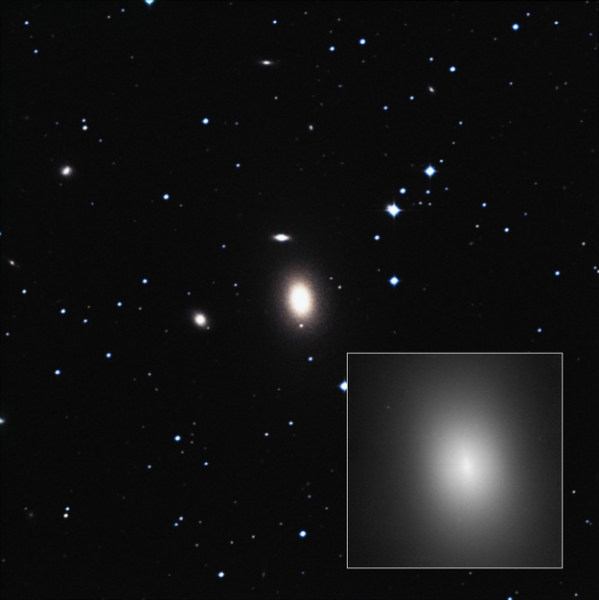BEHEMOTH BLACK HOLE FOUND IN AN UNLIKELY PLACE [HEIC1607]

06 April 2016
Astronomers have uncovered one of the biggest supermassive black holes, with the mass of 17 billion Suns, in an unlikely place: the centre of a galaxy that lies in a quiet backwater of the Universe. The observations, made with the NASA/ESA Hubble Space Telescope and the Gemini Telescope in Hawaii, indicate that these monster objects may be more common than once thought. The results of this study are released in the journal Nature.
Until now, the biggest supermassive black holes – those having more than 10 billion times the mass of our Sun – have only been found at the cores of very large galaxies in the centres of massive galaxy clusters. Now, an international team of astronomers using the NASA/ESA Hubble Space Telescope has discovered a supersized black hole with a mass of 17 billion Suns in the centre of the rather isolated galaxy NGC 1600.
NGC 1600 is an elliptical galaxy which is located not in a cluster of galaxies, but in a small group of about twenty. The group is located 200 million light-years away in the constellation Eridanus. While finding a gigantic supermassive black hole in a massive galaxy within a cluster of galaxies is to be expected, finding one in an average-sized galaxy group like the one surrounding NGC 1600 is much more surprising.
"Even though we already had hints that the galaxy might host an extreme object in the centre, we were surprised that the black hole in NGC 1600 is ten times more massive than predicted by the mass of the galaxy," explains lead author of the study Jens Thomas from the Max Planck-Institute for Extraterrestrial Physics, Germany.
See full text